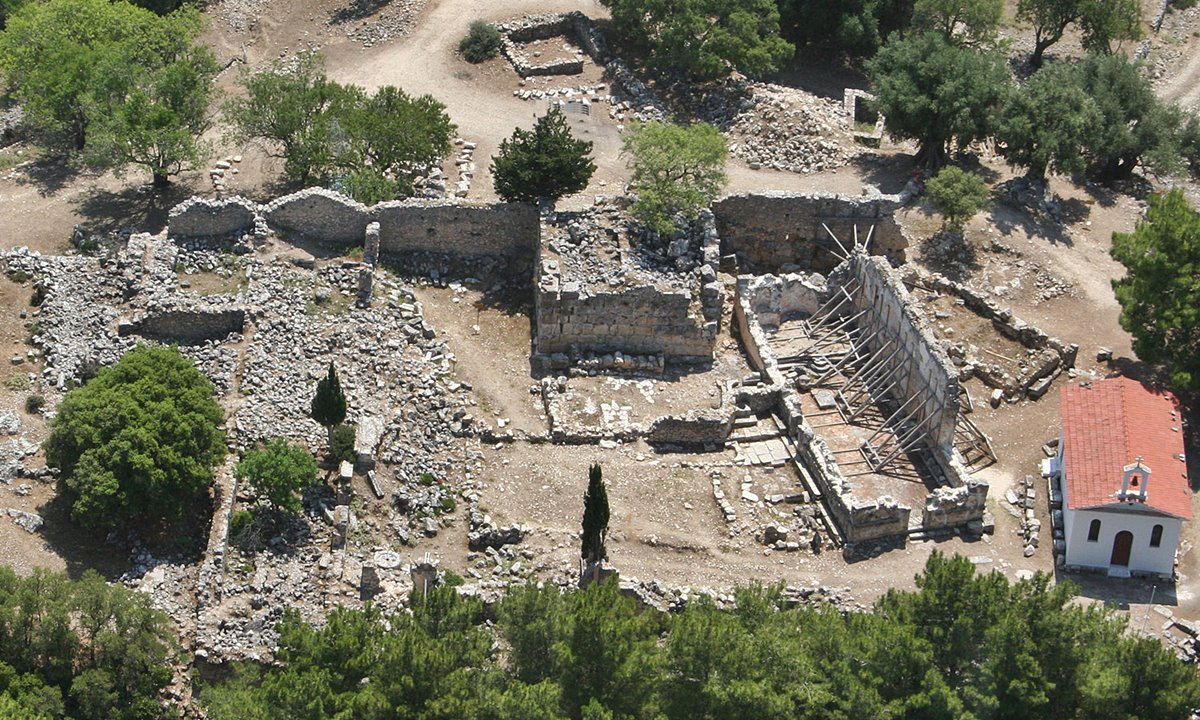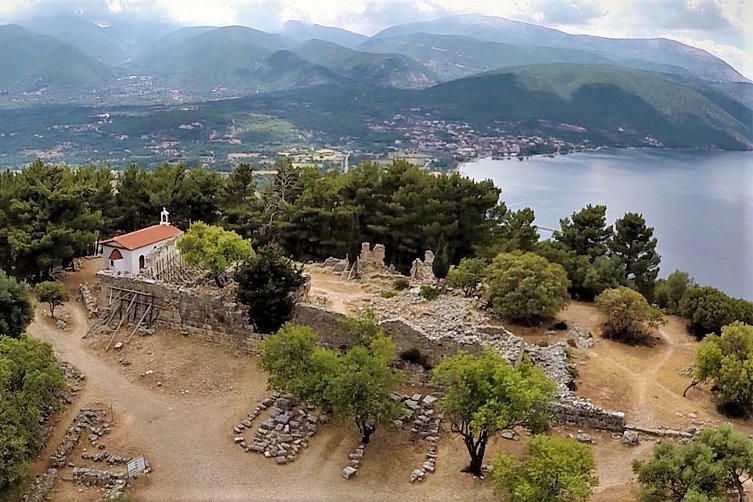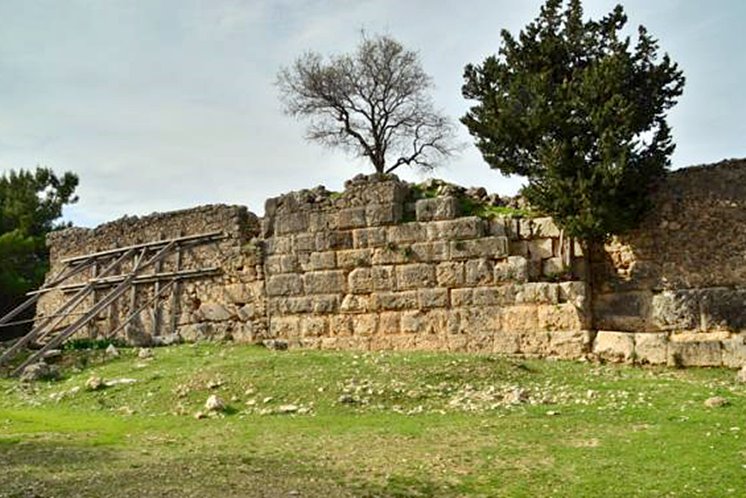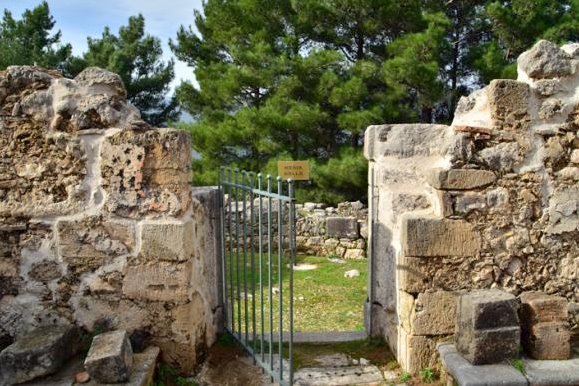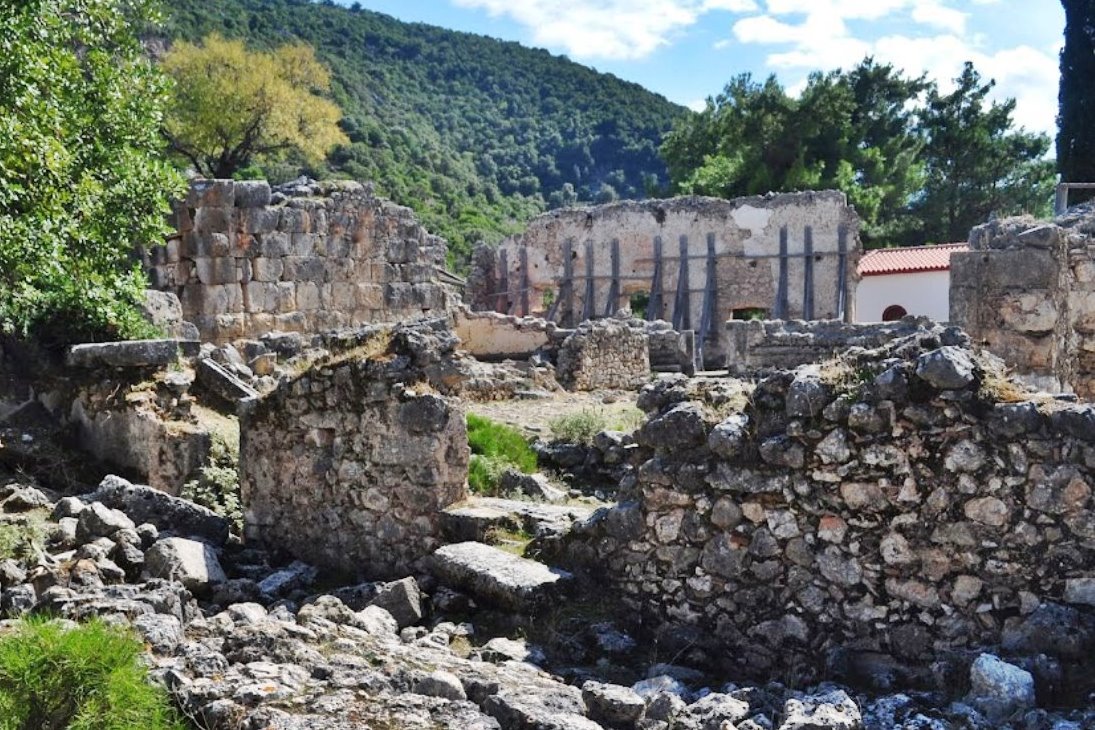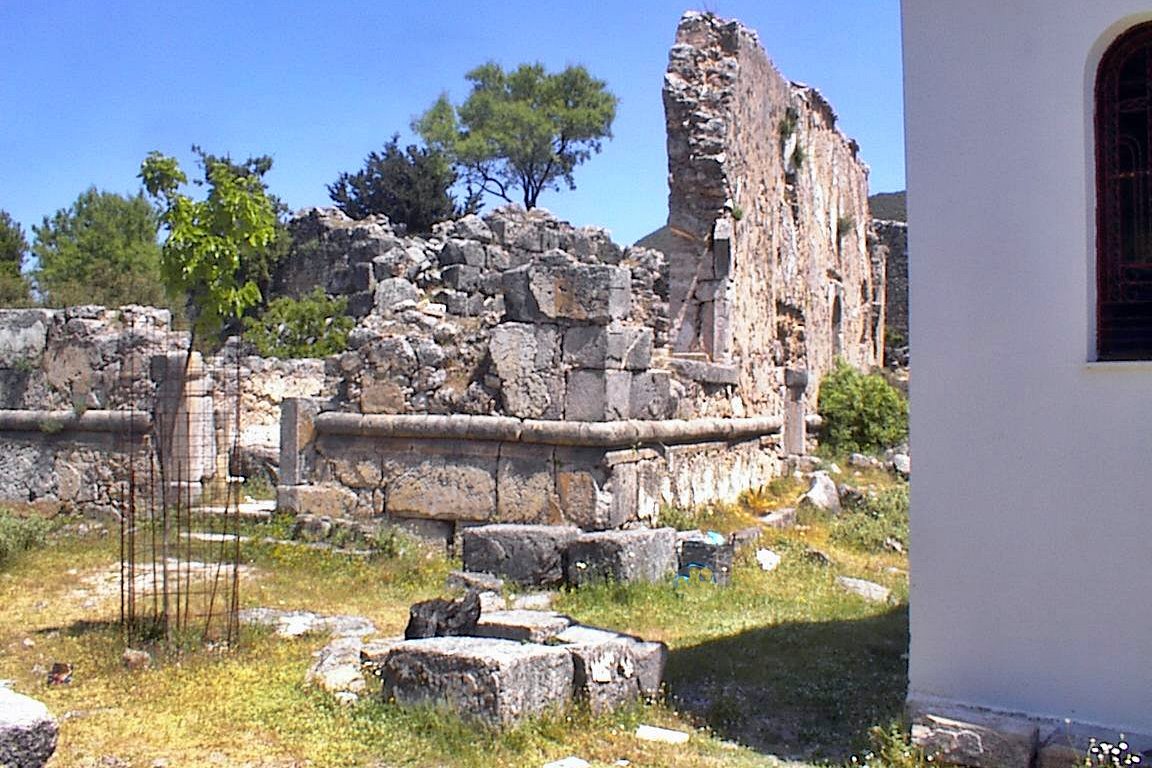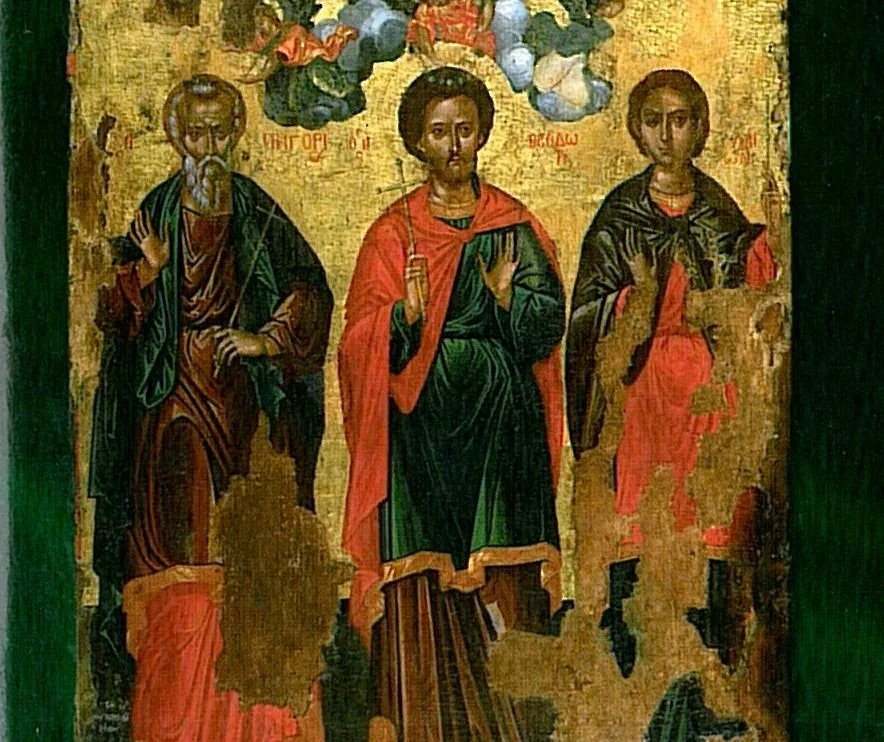Sami, Sami, Cephalonia,Ionian islands
Monastery of Agioi Fanentes
| Location: |
| On the citadel of ancient Sami, on the hills SE of modern Sami in Kefalonia |
| Region > Prefecture: |  |
| Ionian islands Cephalonia | |
| Municipality > Town: | |
| City of Sami • Sami | |
| Altitude: | |
| Elevation ≈ 232 m |
| Time of Construction | Origin | |
| perhaps 12th cent. | BYZANTINE |
|
| Castle Type | Condition | |
| Castle-Monastery |
Rather Poor
|
Ruined castle-monastery built on the acropolis of ancient Sami in Kefalonia, on a hill above modern Sami to the southeast.
The monastery has a fortress character. A large part of the ancient walls was incorporated into its fortification.
History
The ruins of the monastery of Agioi Fanentes are located in the acropolis of ancient Sami. The acropolis spread over two hills on a large area and had a strong fortification. On one of these hills, the southern one, which in ancient times was called Kyatis, the monastery was built.
The founding date of the monastery is not exactly known, but it is certain that the original monastery was founded during the Middle Byzantine Period.
The Agioi Fanentes were three Roman soldiers: Theodore, Gregory and Leo, who came from the eastern provinces of the Roman empire and were Christians (at a time, in the 4th century AD, when Christianity had already widespread but not fully prevalent).
During the reign of the emperor Constantius II (337-361 AD) the three decided to withdraw from the army and seclude themselves in a hermitage above Sami.
According to the official church history, the decision of the three to leave the army and not return to the East is due to the fact that Constantius II was a follower of the Arian sect and actively promoted Arianism. So to avoid any connection with the heretics, they preferred to stay in Kefalonia which was outside the jurisdiction of Constantius (the island belonged to his brother and emperor of the West Konstas).
The three monks would have been forgotten, but at some point, many years after their death, a miracle happened:
A rich Cephalonian named Michael who was suffering from a form of leprosy saw one night in his sleep three angelic figures who said to hima that he would only be cured if he found their unburied bodies. When Michael woke up, he didn't know where to look. But he met a swineherd, who told him that while looking for a pig that had strayed from the herd, he entered a forest and discovered in a cave three unburied and incorruptible bodies, from which a fragrance was emanating. Michael understood that it was the three Saints he had seen in his dream and, guided by the shepherd, he went to the forest, where the three holy relics were under a brilliant light. There he prayed and his illness was cured.
It goes without saying that this miracle became known immediately throughout the island, while Michael erected a church at the place where the remains were found. The place very soon developed into a popular pilgrimage. The three Saints were called “Phanentes” because they appeared in this miraculous way.
The first reference we have to the existence of the monastery is from a Latin synaxarion of 1264 (from 1185 until the middle of the 15th century Kefallonia belonged to the Kingdom of Sicily). There are two Latin synaxaria by Italian clerics of the Middle Ages from which the names of the Saints became known as well as the miracle of the healed leper Michael thanks to which they were canonized.
At some point the remains of the 3 saints were transferred by the Venetians to Venice. We do not know exactly when this happened, but it is most likely that it happened towards the end of the 15th century, when the monastery had been abandoned and, furthermore, Kefalonia was in danger of falling into the hands of the Ottomans. Cephalonia belonged to Venice from 1500 to 1797 but we have to rule out the possibility that the relics were seized during this Venetian period.
For years it was believed that the remains were lost in some shipwreck, but they were located by Cephalonite priests, a few decades ago, in the temple of the Prophet Zacharias in Venice. After identification of the relics (with the help of an Italian forensics expert!) the Roman Catholic Archdiocese of Venice (Patriarcato di Venezia) agreed to return part of the relics. The recollection of the holy relics in Kefalonia was completed in May 2009.
The monastery was therefore definitely founded before 1264, perhaps in the 12th century or much earlier. Towards the end of the 15th century it must have been deserted but after 1500 it was reactivated.
During the 17th century the monastery was renovated. This was done, according to a wall inscription, in 1633 during the days of abbot Seraphim Zervos. The ruins that we see today inside the monastery are remains of the buildings of that period. The catholicon was also renovated at that time as confirmed by the date 1654 inscribed on the old icon of Saints Fanentes that was saved from the iconostasis of the monastery's catholicon.
A period of wealth and prosperity followed for the monastery, which during the 17th-18th century he owned large lands and 5 dependencies on the island. The church of “Our Lady in Loutro” (the current parish church of the Dormition) in Sami also belonged to it.
The decline began in the 19th century, after 1805, when the British administration of the Ionian Islands imposed restrictions on the operation of the monasteries. Thus, the monastery was slowly abandoned. The final destruction occured in 1953 when the great Kefalonia earthquake demolished what was left.
Much later, a modern chapel dedicated to All Saints was built next to the old Catholic church.
Structure, Fortification & Buildings
The complex of the Monastery of Agioi Fanentes was located on an area of approximately 2,000 sq.m., within a fortified enclosure with a perimeter of 175 meters.
The interior follows the typical layout of a Byzantine monastery with the monks’ cells along the perimeter and the catholicon in the center. Building material from the ancient acropolis has been widely used for the construction, while large parts of the ancient fortification have been incorporated into the newer fortification.
The interior is dominated by the base of a massive ancient tower (photo 2) with base dimensions of approximately 8.5✖10.5m, to which at least two floors and a tiled roof were added during the old days of the monastery (see and ARTWORK, above).
Collateral stories
It is interesting that in Sami after the 2nd century AD the cult of a local god, Epiphanes, was established. As Church Father Clement of Alexandria mentions, Epiphanes was a Gnostic philosopher who authored the work On Justice (which is the oldest surviving Gnostic treatise).
Epiphanes died very young, 17 years old, in Sami and after his death he was deified. There was even a sanctuary dedicated to his worship in Sami which was probably also in the ancient acropolis and very likely in the place where the Monastery of Agioi Fanentes was later built. (It was common practice to build Christian churches on the site of ancient sanctuaries).
It has been suggested that the similarity of the name “Epiphanes” with the strange “Fanentes” in relation to the same location may not be coincidental.
This doesn’t seem too unreasonable. After all, many local Christian traditions have their roots in older beliefs. However, there is no further evidence to support this association.
| First entry in Kastrologos: | June 2024 |
|
|
| Access |
|---|
| Entrance: |
| Free access. |
| Other castles around |
|---|
| Assos Fortress |
| Basilica of Fiscardo |
| Saint George Castle |
| Vardiola of Koutsoupia |
| Bastion of Loutsa |
| Kasteli of Paliki |
| Vardiola at Piniatoros’ property |



